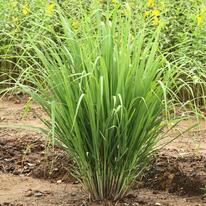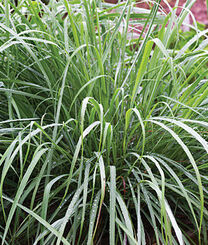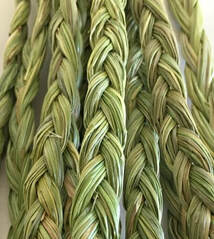
Lemon Grass from Bulbs
Lemongrass lends a fresh, fine, fragrant lemony tang with hints of ginger and mint. Adds bright, grassy, floral kick to curries, fish, shrimp, soups, stews, marinades and stir-fries. Use a ¼ teaspoon to make a refreshing tea, hot or cold. Or use in place of grated lemon rind in cookie and cake recipes. Lovely grass-like plant grows to 4 ft. in the first year. KITCHEN TIP: Before adding to dishes, slice lemongrass into rings or strips and bruise segments to release the flavor. Freezes well. This information came from Burpee one of the many vendors we purchase seed from.
Lemongrass lends a fresh, fine, fragrant lemony tang with hints of ginger and mint. Adds bright, grassy, floral kick to curries, fish, shrimp, soups, stews, marinades and stir-fries. Use a ¼ teaspoon to make a refreshing tea, hot or cold. Or use in place of grated lemon rind in cookie and cake recipes. Lovely grass-like plant grows to 4 ft. in the first year. KITCHEN TIP: Before adding to dishes, slice lemongrass into rings or strips and bruise segments to release the flavor. Freezes well. This information came from Burpee one of the many vendors we purchase seed from.

Lemon Grass from Seed
Lemongrass lends a fresh, fine, fragrant lemony tang with hints of ginger and mint. Adds bright, grassy, floral kick to curries, fish, shrimp, soups, stews, marinades and stir-fries. Use a ¼ teaspoon to make a refreshing tea, hot or cold. Or use in place of grated lemon rind in cookie and cake recipes. Lovely grass-like plant grows to 4 ft. in the first year. KITCHEN TIP: Before adding to dishes, slice lemongrass into rings or strips and bruise segments to release the flavor. Freezes well. This information came from Burpee one of the many vendors we purchase seed from.
Lemongrass lends a fresh, fine, fragrant lemony tang with hints of ginger and mint. Adds bright, grassy, floral kick to curries, fish, shrimp, soups, stews, marinades and stir-fries. Use a ¼ teaspoon to make a refreshing tea, hot or cold. Or use in place of grated lemon rind in cookie and cake recipes. Lovely grass-like plant grows to 4 ft. in the first year. KITCHEN TIP: Before adding to dishes, slice lemongrass into rings or strips and bruise segments to release the flavor. Freezes well. This information came from Burpee one of the many vendors we purchase seed from.

Sweet Vanilla Grasss
Vanilla grass (Hierochloe odorata) is grown for its use in Native American and other rituals, as an incense. It can be smoked but the healthfulness of this is very dubious. It has a soft sweet scent, and need not be burned to be enjoyed. Live plants can be grown around the house, as living incense.Vanilla grass occurs in the wild in both North America and northern Europe. The Native Americans used it for scenting the floors of their tents, and as part of ritual costumes. In Northern Europe (particularly Russia), it is known as Mary's Grass, and was strewn on church steps for Saints' Days. It is also known as Zebrovka, Seneca Grass, Holy Grass, and Buffalo Grass (but should not be confused with Buchloe dactyloides buffalo grass).Hierochloe odorata prefers moist soil, and partial shade. It can withstand full sun in temperate climates and withstands winter excellently. Hardy in zones 4-9.Vanilla grass spreads primarily through its roots. Two kinds of stems grow, the stout ones with flowers, and the lanky sterile stems. Vanilla grass is harvested by pulling off sterile stems. It's the sterile stems that are used for braiding and basketry. They grow 18-24 inches. One "plug" (a stem or two with a few inches of frizzly rhizome) can typically cover a square foot in a year. (It's recommended by growers that harvesting take place after this initial period.)Wild stands of Vanilla grass are disappearing, due to "overpulling". When this biomass is removed from the sweetgrass stand, a little of the more precious trace nutrients is lost.* NOTE: Vanilla grass Hierochloe odorata exists in wild stands in Connecticut, Maine, Massachussetts, New Hampshire, Rhode Island, and Vermont. It is classified as "endangered" in Maryland, North Carolina, and Pennsylvania. There are four other species species of sweetgrass (alpina, hirta, occidentalis, and pauciflora); they're not as strongly fragrant as odorata. This information comes from Walmart.com. I do buy some specialty plants from them online. The image comes from www.scents-of-earth.com
Vanilla grass (Hierochloe odorata) is grown for its use in Native American and other rituals, as an incense. It can be smoked but the healthfulness of this is very dubious. It has a soft sweet scent, and need not be burned to be enjoyed. Live plants can be grown around the house, as living incense.Vanilla grass occurs in the wild in both North America and northern Europe. The Native Americans used it for scenting the floors of their tents, and as part of ritual costumes. In Northern Europe (particularly Russia), it is known as Mary's Grass, and was strewn on church steps for Saints' Days. It is also known as Zebrovka, Seneca Grass, Holy Grass, and Buffalo Grass (but should not be confused with Buchloe dactyloides buffalo grass).Hierochloe odorata prefers moist soil, and partial shade. It can withstand full sun in temperate climates and withstands winter excellently. Hardy in zones 4-9.Vanilla grass spreads primarily through its roots. Two kinds of stems grow, the stout ones with flowers, and the lanky sterile stems. Vanilla grass is harvested by pulling off sterile stems. It's the sterile stems that are used for braiding and basketry. They grow 18-24 inches. One "plug" (a stem or two with a few inches of frizzly rhizome) can typically cover a square foot in a year. (It's recommended by growers that harvesting take place after this initial period.)Wild stands of Vanilla grass are disappearing, due to "overpulling". When this biomass is removed from the sweetgrass stand, a little of the more precious trace nutrients is lost.* NOTE: Vanilla grass Hierochloe odorata exists in wild stands in Connecticut, Maine, Massachussetts, New Hampshire, Rhode Island, and Vermont. It is classified as "endangered" in Maryland, North Carolina, and Pennsylvania. There are four other species species of sweetgrass (alpina, hirta, occidentalis, and pauciflora); they're not as strongly fragrant as odorata. This information comes from Walmart.com. I do buy some specialty plants from them online. The image comes from www.scents-of-earth.com